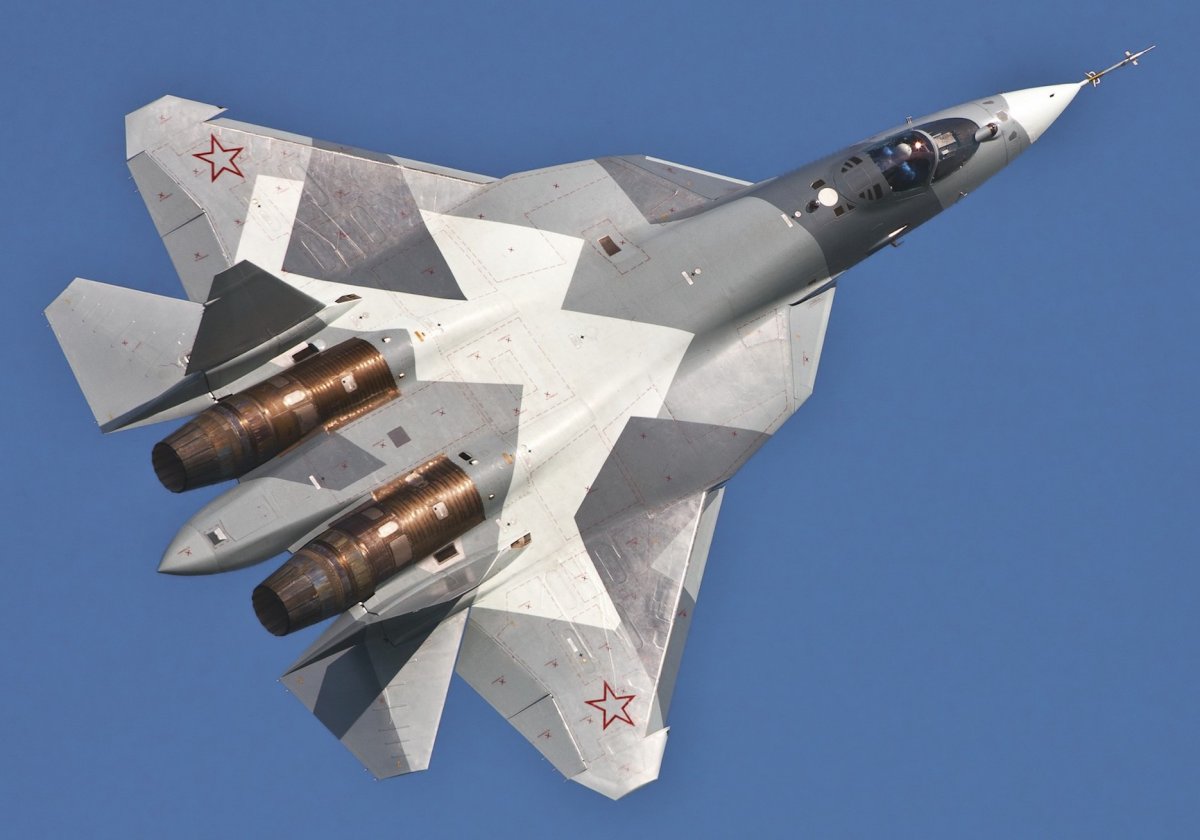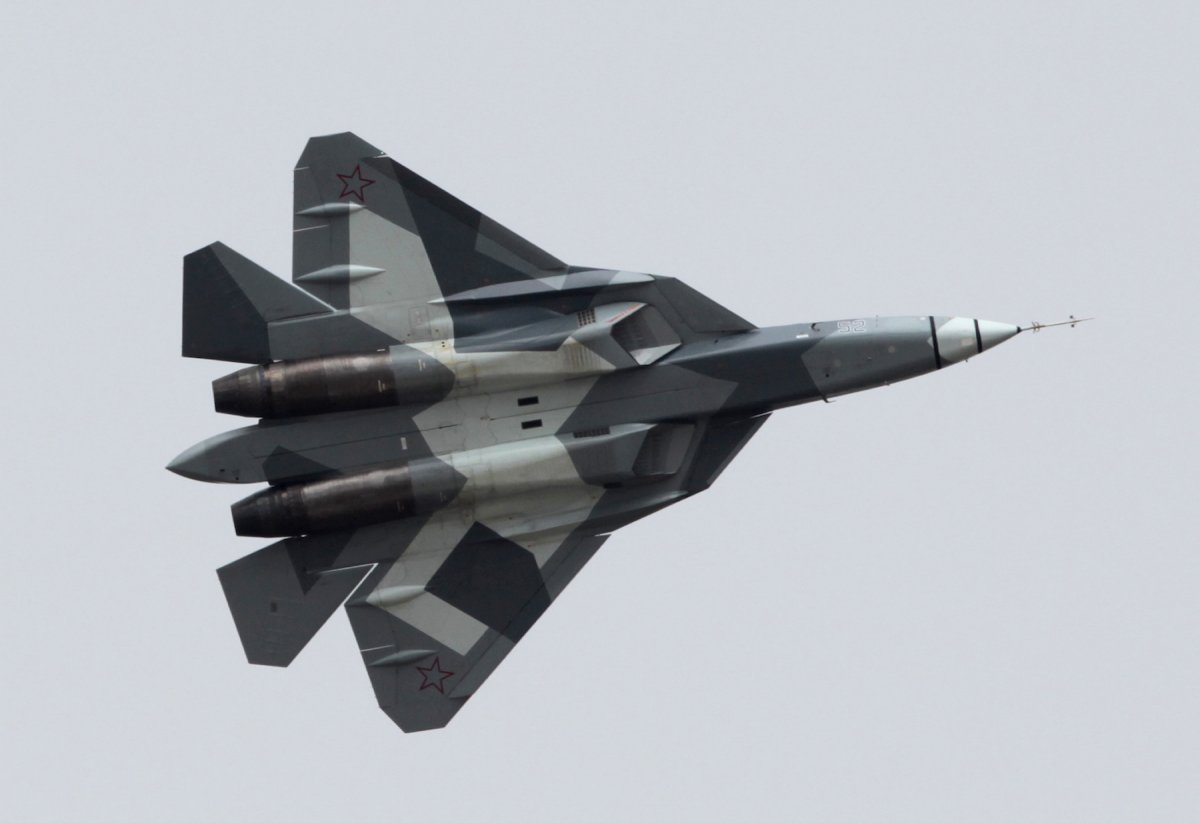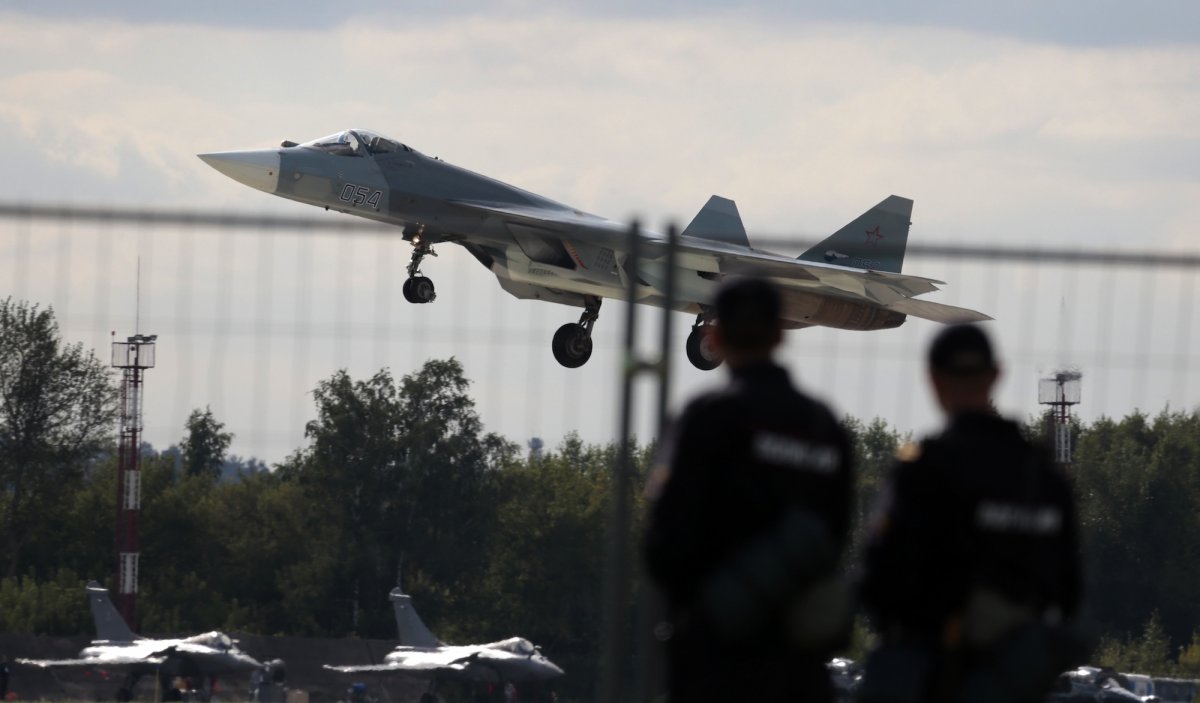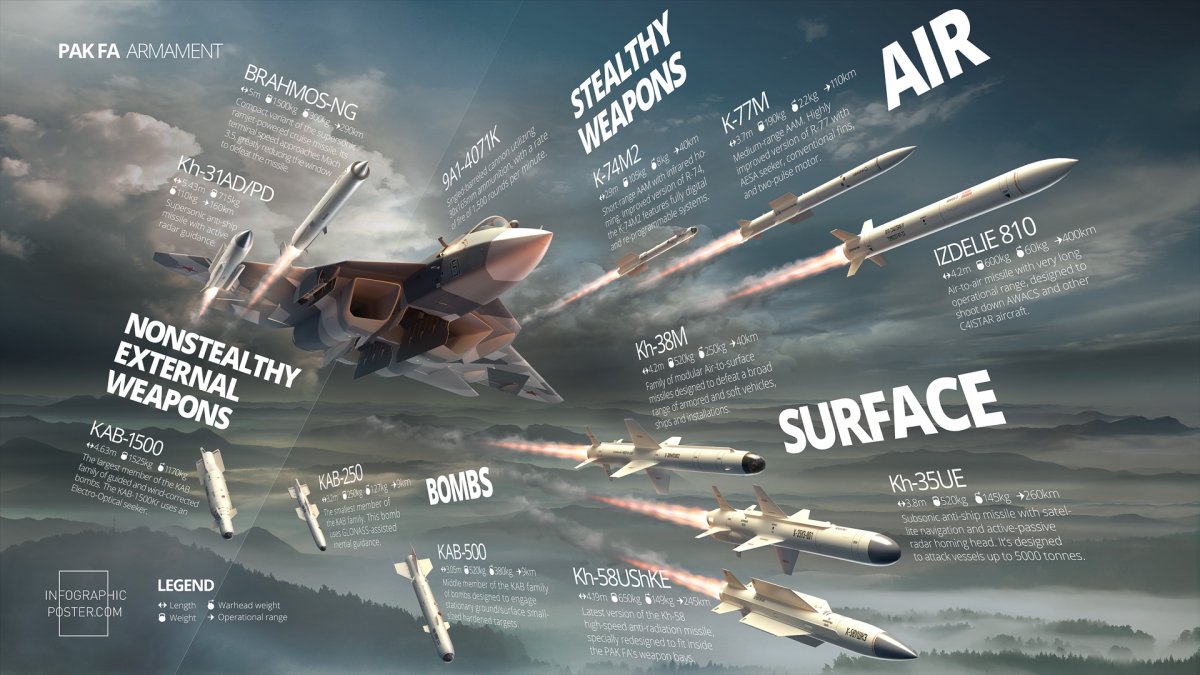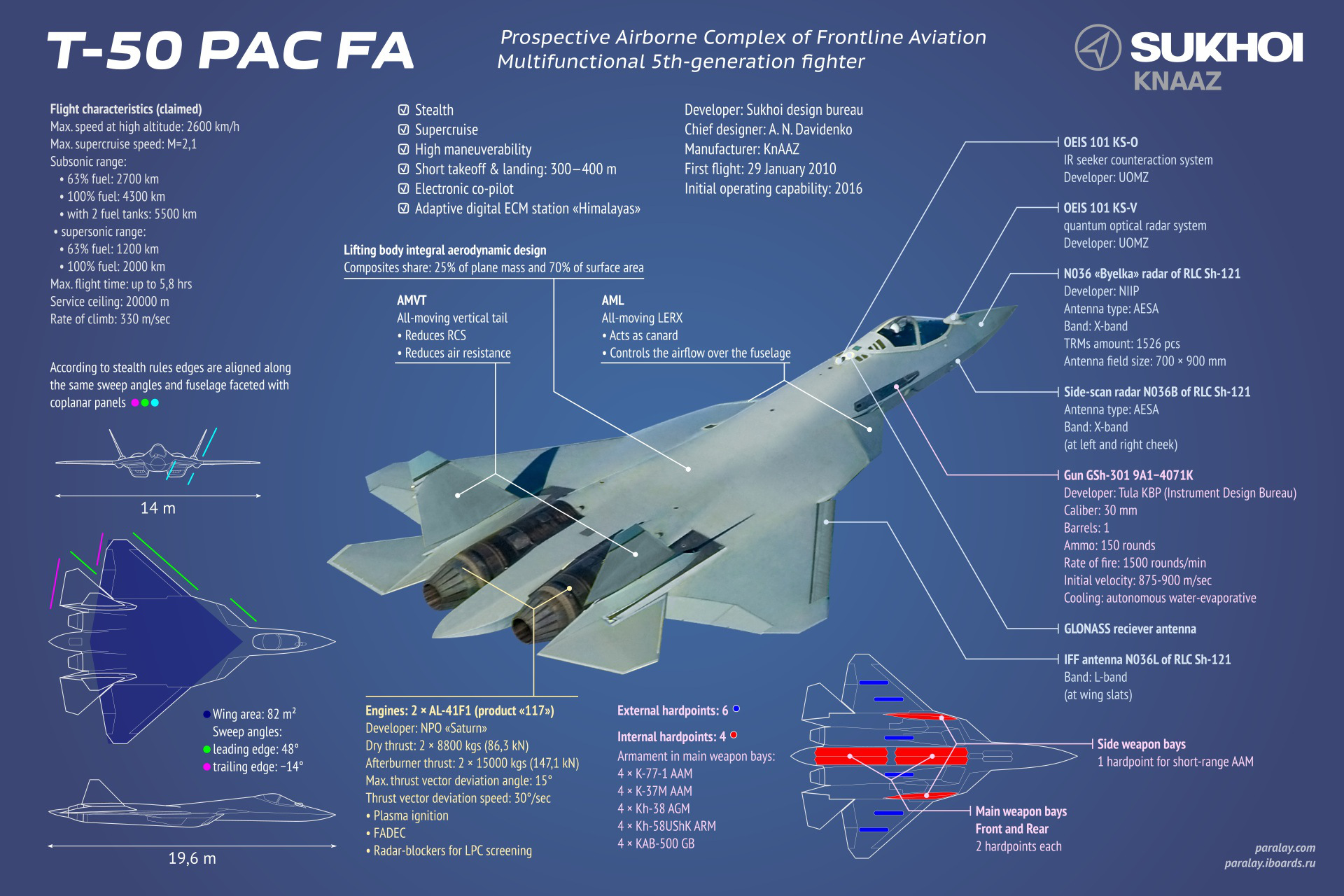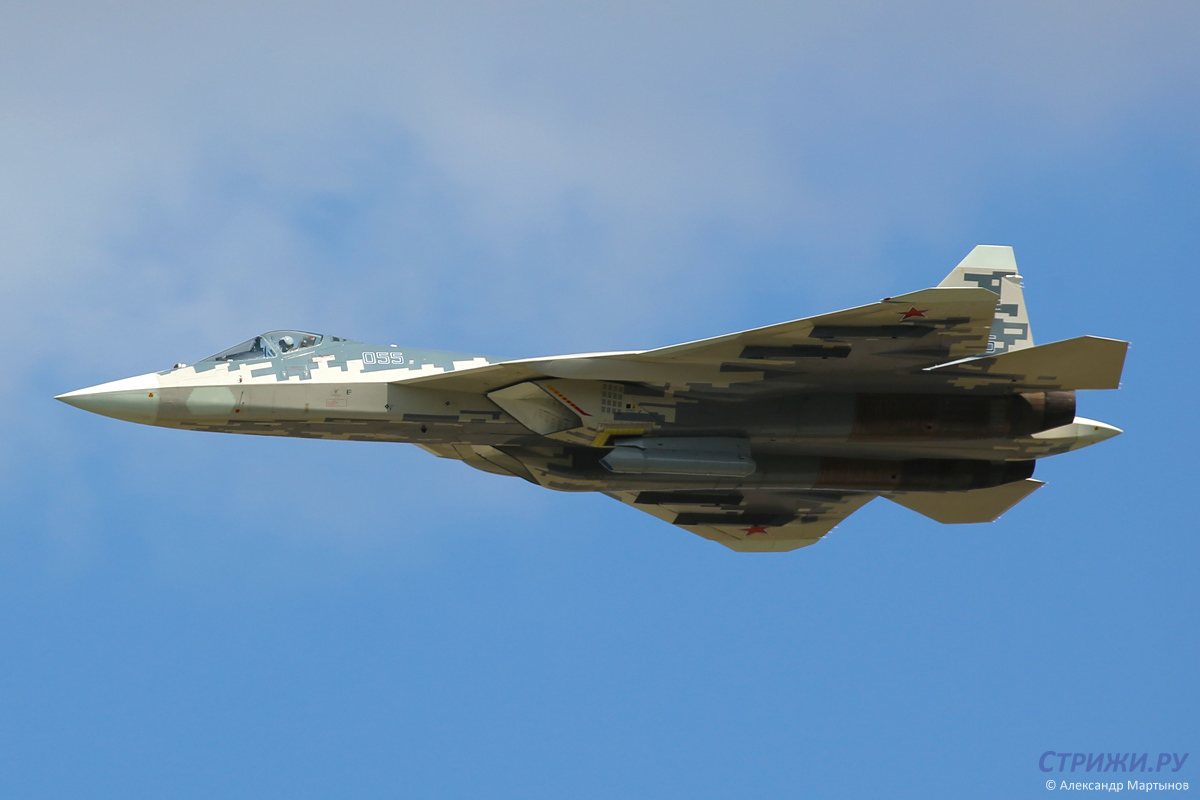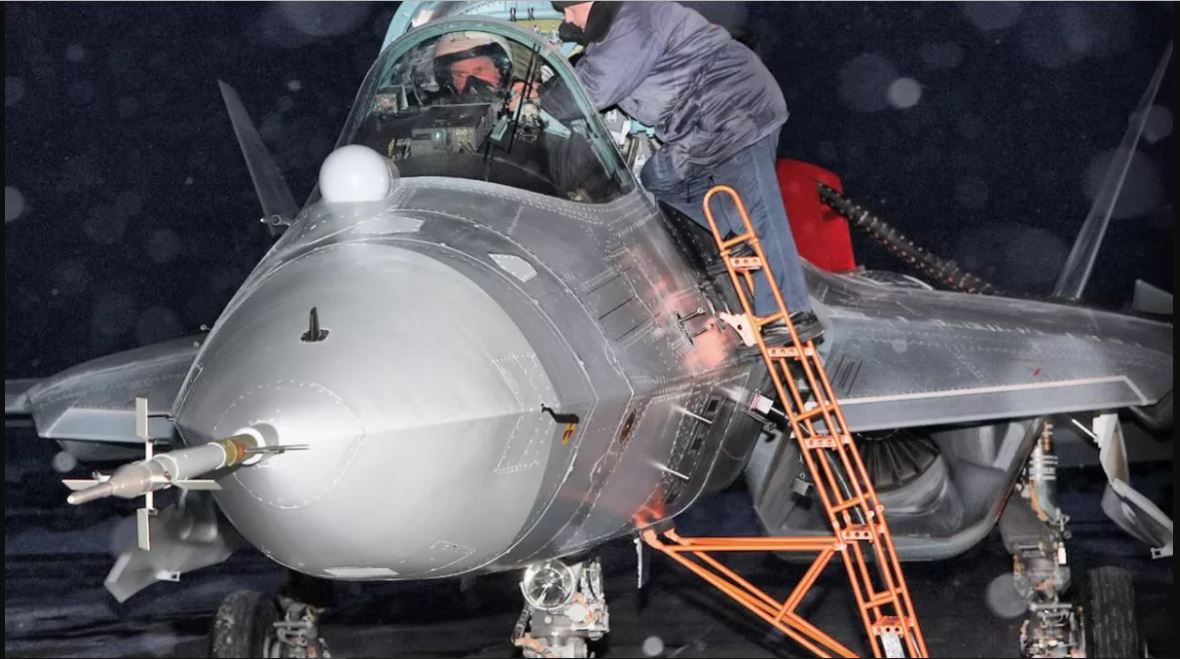It looks like you're using an Ad Blocker.
Please white-list or disable AboveTopSecret.com in your ad-blocking tool.
Thank you.
Some features of ATS will be disabled while you continue to use an ad-blocker.
share:
As an experiment, let's see if we can put information, news and pictures of Sukhoi's Su-57 (formerly PAK-FA and T-50). I think it would do well for
us to mimic what we've been doing in the SR-72 thread: that has been a general thread about hypersonics, not just the SR-72. In this case, the
thread would be strictly for the Su-57. I would have used to most recent thread, but the title is a bit...negative about the project and whatever I
may think and feel about the Su-57's future personally, there's a lot of information and pix to be shared without the inherit bias of the title.
To kick off, here's a nice shot of the Su-57:
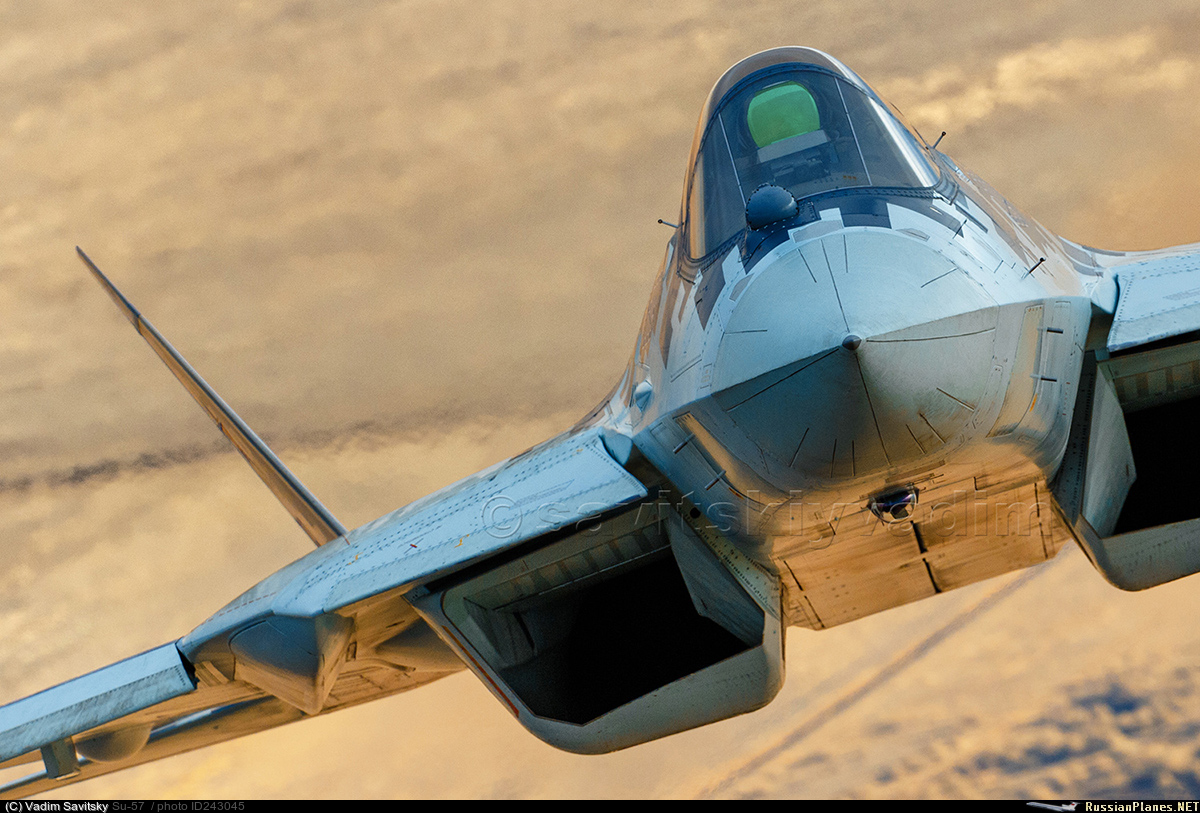
They have improved the manufacturing, but there are still glaring issues, I'd say (bay doors, the numerous protrusions, frex).
To kick off, here's a nice shot of the Su-57:

They have improved the manufacturing, but there are still glaring issues, I'd say (bay doors, the numerous protrusions, frex).

I thought I would add this great image showing the positions of the different systems.
1 Front , 2 side, and 1 rear facing radar. Infrared sensor in the front, laser optical countermeasure turrets top and bottom. To name a few.
Edit to add:
Here is a good resource. It's written by a fanboy. Still very informative.
fullafterburner.weebly.com...
edit on 12 27 2018 by tadaman because: (no reason given)
I wonder why Russia don't have DSI like China and America do? The latest Chinese and American planes like JF-17, J-10, J-20, F-35 all have DSI.
Su-57 maintains traditional air intake like F-22 does. F-22 is understandable, because it was developed before DSI was developed in the mid 1990s.
Su-57 maintains traditional air intake like F-22 does. F-22 is understandable, because it was developed before DSI was developed in the mid 1990s.
edit on 28-12-2018 by zukli because: (no reason given)
originally posted by: anzha
a reply to: zukli
More than one source says the F-22 has it. It might just be the Su-57 that does not.
DSI significantly reduces plane's radar signature. DSI does not have splitter. DSI is fused with plane body. F-22 does not have DSI.
en.wikipedia.org...
edit on 28-12-2018 by zukli because: (no reason given)
a reply to: zukli
Because it's difficult to get correct geometry. Inlet design is already a bit of witchcraft. Ramps, cones, doors already have generations of experience behind them. DSI inlets require new math. And what works for one engine may need a completely different configuration for another engine. If they are looking to the next engine, for example, there's no reason to produce a taliored example for the current development models. And the improvement over traditional ramps is somewhat minimal and focused on a specific range of airflow velocity whereas ramps and shock cones can be optimal across the envelope.
Sort of like choosing between a swing-wing or fixed -wing solution. Is good enough, good enough or do you need a tailorable configuration?
Having said that, you get a lighter, less complex solution, which may even out perform the ramps or cones across key areas. So properly designed DSI is likely to continue to be seen on supersonic aircraft, regardless of signature benefits.
Because it's difficult to get correct geometry. Inlet design is already a bit of witchcraft. Ramps, cones, doors already have generations of experience behind them. DSI inlets require new math. And what works for one engine may need a completely different configuration for another engine. If they are looking to the next engine, for example, there's no reason to produce a taliored example for the current development models. And the improvement over traditional ramps is somewhat minimal and focused on a specific range of airflow velocity whereas ramps and shock cones can be optimal across the envelope.
Sort of like choosing between a swing-wing or fixed -wing solution. Is good enough, good enough or do you need a tailorable configuration?
Having said that, you get a lighter, less complex solution, which may even out perform the ramps or cones across key areas. So properly designed DSI is likely to continue to be seen on supersonic aircraft, regardless of signature benefits.
originally posted by: RadioRobert
a reply to: zukli
Because it's difficult to get correct geometry. Inlet design is already a bit of witchcraft. Ramps, cones, doors already have generations of experience behind them. DSI inlets require new math. And what works for one engine may need a completely different configuration for another engine. If they are looking to the next engine, for example, there's no reason to produce a taliored example for the current development models. And the improvement over traditional ramps is somewhat minimal and focused on a specific range of airflow velocity whereas ramps and shock cones can be optimal across the envelope.
Sort of like choosing between a swing-wing or fixed -wing solution. Is good enough, good enough or do you need a tailorable configuration?
Having said that, you get a lighter, less complex solution, which may even out perform the ramps or cones across key areas. So properly designed DSI is likely to continue to be seen on supersonic aircraft, regardless of signature benefits.
All the new Chinese and American planes have DSI. In fact, JF-17 specifically got DSI in a later prototype before serial production started. Chinese and American consider DSI vital on every new plane. It is likely Russians don't have DSI technology.
a reply to: zukli
The Su-57, like the F-23, has substantially curved inlets to slow the air which also hides the compressor blades. The Raptor 's inlet curves around the bay which works similarly, though less pronounced. The Raptor and Sukhoi both retain splitter plates for boundary layer separation. The F-23's BLCS was a bit different.
The Su-57, like the F-23, has substantially curved inlets to slow the air which also hides the compressor blades. The Raptor 's inlet curves around the bay which works similarly, though less pronounced. The Raptor and Sukhoi both retain splitter plates for boundary layer separation. The F-23's BLCS was a bit different.
a reply to: drwire
All that high-alpha maneuverability probably comes at a bit of a cost in terms of intake complexity, especially given what I assume are the relatively limited resources at Sukhoi. You have to remember that they're trying to design a 5th generation air superiority fighter on the kind of budget normally seen at Cessna or Gulfstream.
All that high-alpha maneuverability probably comes at a bit of a cost in terms of intake complexity, especially given what I assume are the relatively limited resources at Sukhoi. You have to remember that they're trying to design a 5th generation air superiority fighter on the kind of budget normally seen at Cessna or Gulfstream.
edit on 28-12-2018 by Barnalby because: (no reason given)
originally posted by: drwire
a reply to: RadioRobert
not hidding enough
Correct. DSI hides engine a lot better. That's why every new Chinese and American plane has it. F-22A was designed before there was DSI. F-22B would have got DSI if the F-22 project was not terminated in 2009.
originally posted by: Barnalby
a reply to: drwire
All that high-alpha maneuverability probably comes at a bit of a cost in terms of intake complexity, especially given what I assume are the relatively limited resources at Sukhoi. You have to remember that they're trying to design a 5th generation air superiority fighter on the kind of budget normally seen at Cessna or Gulfstream.
Russia labor cost is 10% of America labor cost. Russia GDP per capita is 10% of America GDP per capita. In terms of proportion, Russia spends a lot more on defense than America does.
new topics
-
It’s Falling…
Philosophy and Metaphysics: 48 minutes ago -
Steering the Titantic from the Drydock.
Rant: 3 hours ago
top topics
-
House Passes Laken Riley Act
Mainstream News: 15 hours ago, 24 flags -
Hearing more ambulances lately
Medical Issues & Conspiracies: 14 hours ago, 8 flags -
Los Angeles brush fires latest: 2 blazes threaten structures, prompt evacuations
Mainstream News: 14 hours ago, 7 flags -
Steering the Titantic from the Drydock.
Rant: 3 hours ago, 7 flags -
Paramilitary Leaks - John Williams
Whistle Blowers and Leaked Documents: 13 hours ago, 6 flags -
The more I think about it
General Chit Chat: 16 hours ago, 4 flags -
Some sausage, some chicken, some sauce, some onions and some garlic...and some peppers!
Food and Cooking: 14 hours ago, 3 flags -
It’s Falling…
Philosophy and Metaphysics: 48 minutes ago, 1 flags
active topics
-
Steering the Titantic from the Drydock.
Rant • 12 • : angelchemuel -
Post A Funny (T&C Friendly) Pic Part IV: The LOL awakens!
General Chit Chat • 8001 • : baddmove -
The more I think about it
General Chit Chat • 6 • : chiefsmom -
ILLUMINATION: Dimensions / Degrees – Da Vincis Last Supper And The Philosophers Stone
Secret Societies • 22 • : CarlLaFong -
Remember These Attacks When President Trump 2.0 Retribution-Justice Commences.
2024 Elections • 139 • : Oldcarpy2 -
Canada as a state .. how would it work?
General Chit Chat • 19 • : Freeborn -
It’s Falling…
Philosophy and Metaphysics • 0 • : JJproductions -
Let's Buy Greenland
General Chit Chat • 18 • : CriticalStinker -
Meta Llama local AI system is scary good
Science & Technology • 50 • : ArMaP -
Gravitic Propulsion--What IF the US and China Really Have it?
General Conspiracies • 35 • : bastion

